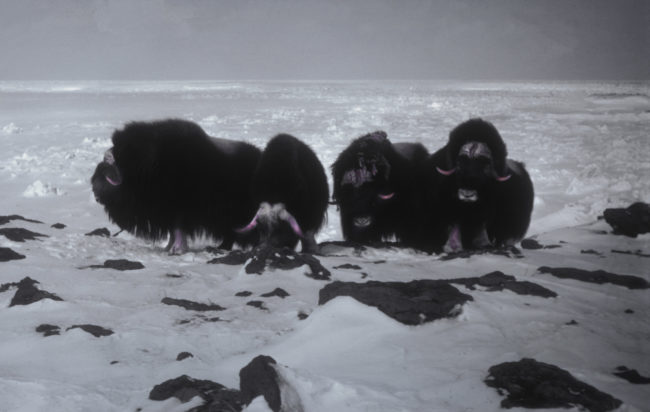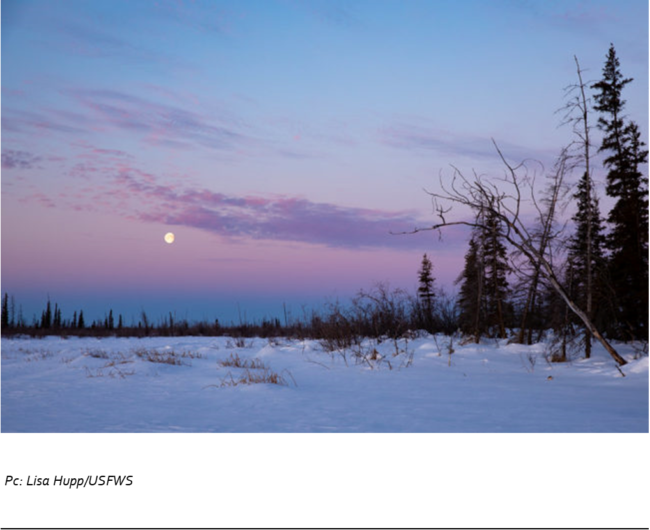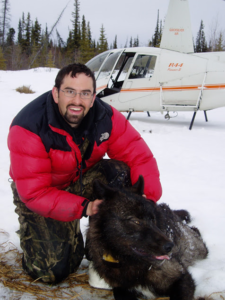By Kyra Neal, Wildlife Biologist, Yukon Delta Refuge
About 30 miles offshore from where the Kuskokwim River meets the Bering Sea, nestled in Shoal Bay, there is a small island village called Mekoryuk, home to around 200 mostly Yup’ik and Cup’ik people. In this place, the mayor is the same person who takes the trash trolley to the transfer station, the city office workers are the same people who teach kindergarten, the reindeer caretaker is the same person who jump started your ATV, and the elders stop by the roadside to share wisdom of their years growing up and to welcome you to their community on Nunivak Island.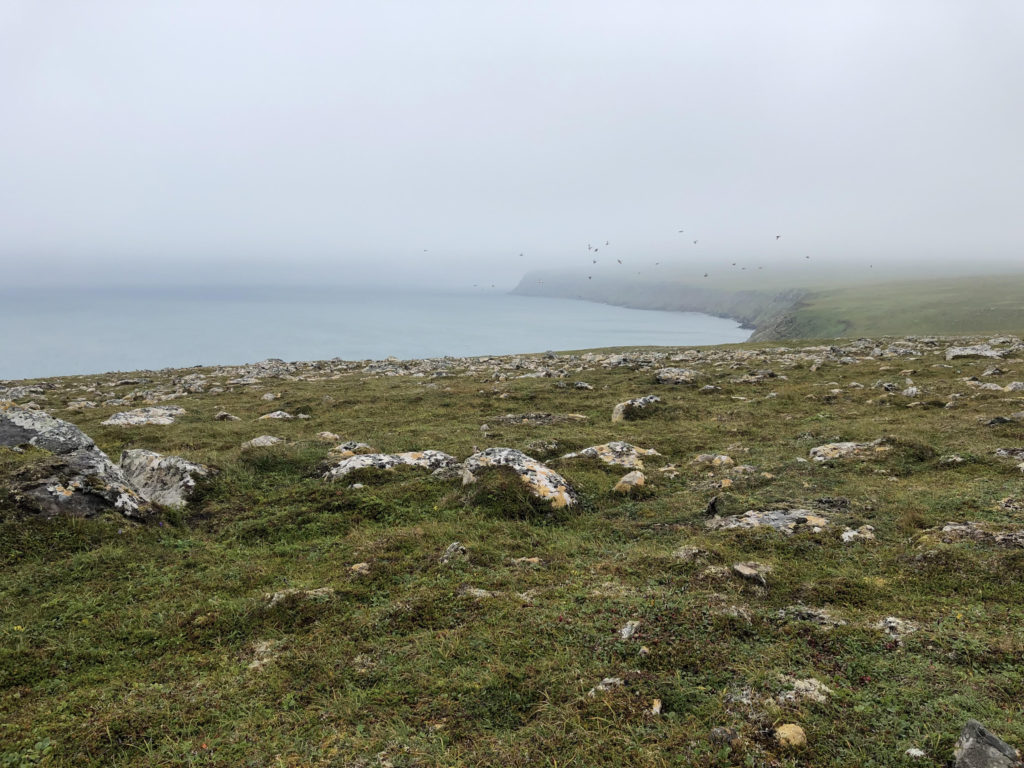 Data gap plot on the western side of Nunivak Island in the Bering Sea.
Data gap plot on the western side of Nunivak Island in the Bering Sea.
Nunivak Island is also home to 700 muskox and 3,000 reindeer. Grazing has occurred on Nunivak Island for hundreds of years, first by caribou until they were extirpated in the late 1800s and then by introduced reindeer and muskox in the last century. The condition of their range was evaluated intensively in 1989 with 10 trend plots involving 40 quadrats and two transects for each location.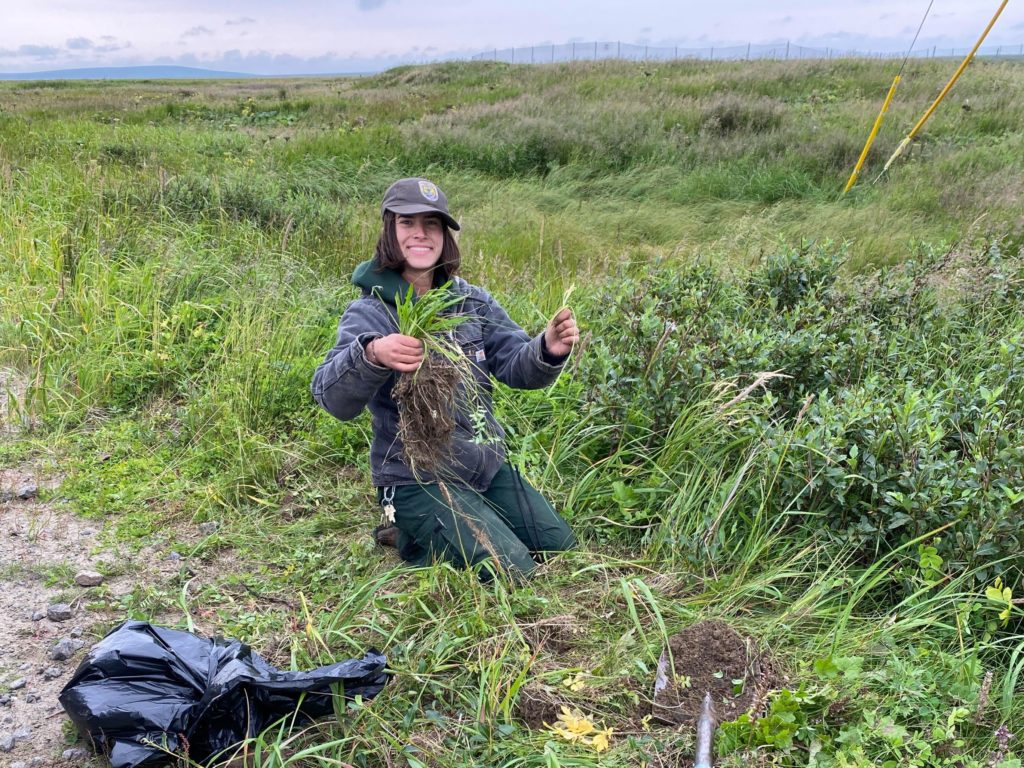
Kyra Neal pulling fall dandelion near the Mekoryuk sewage lagoon road.
Since 1989, Nunivak Island has become increasingly connected to mainland Alaska with more flights, boating, muskox hunting, and tourism. Consequently, Yukon Delta National Wildlife Refuge partnered with the Natural Resources Conservation Service (NRCS) in 2022 and 2023 to reevaluate the range condition and survey the island and village of Mekoryuk for invasive species at two different spatial scales. One is a fine-tooth comb and the other is more of a broad-stroke brush.
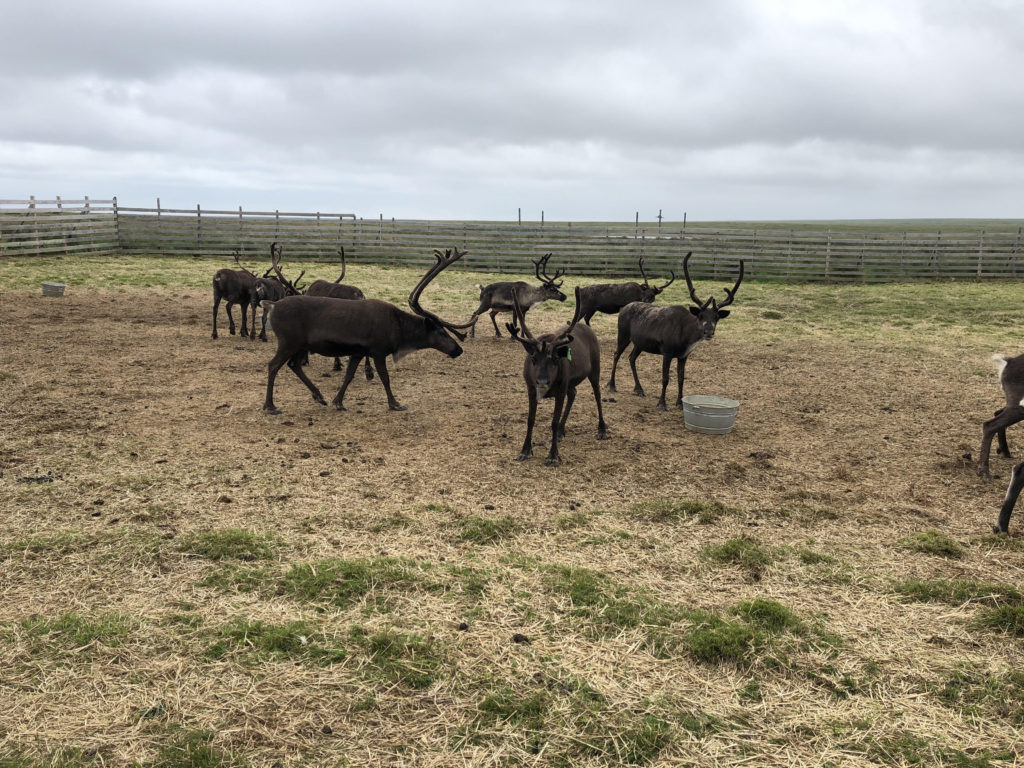
Reindeer at the facility in Mekoryuk
Let’s start with combing the luxurious locks of the tundra. Arriving at each plot via an R-44 helicopter, we applied the same methodology to evaluate range that was used in 1989. Within these 40 20×50 cm quadrats, we estimated ground cover for each species including lichen, shrubs, forbs, grasses, bare ground, rocks, and even scat. In 10 of these quadrats, we measured production by a double sampling clip and weigh method. Changes in ground cover and productivity will tell us how grazing has affected the range. Certain lichens are favorites of reindeer and can be depleted to bare ground exposure when overgrazing occurs. For invasives, we scouted disturbed areas in Mekoryuk by foot and in our monitoring areas, combing the tundra for anything out of place. Roads, barge ports, ATV trails, airstrips were all observed by foot in search of non-native species and plots with a high percentage of bare soil.
Pulling out our broad-stoke brush, range was surveyed between the established transects. Using NRCS reconnaissance methods, we scored range conditions based on evaluating the amounts of lichen, bare soil, presence of grazing and scat on two acres between transects. For our invasive species broad brush, we evaluated bare soil vectors for invasive species to get to the interior of the island. We used aerial imagery of ATV trails and disturbed areas to help us identify potential hot spots for introduction of non-native plants to the ecosystem.
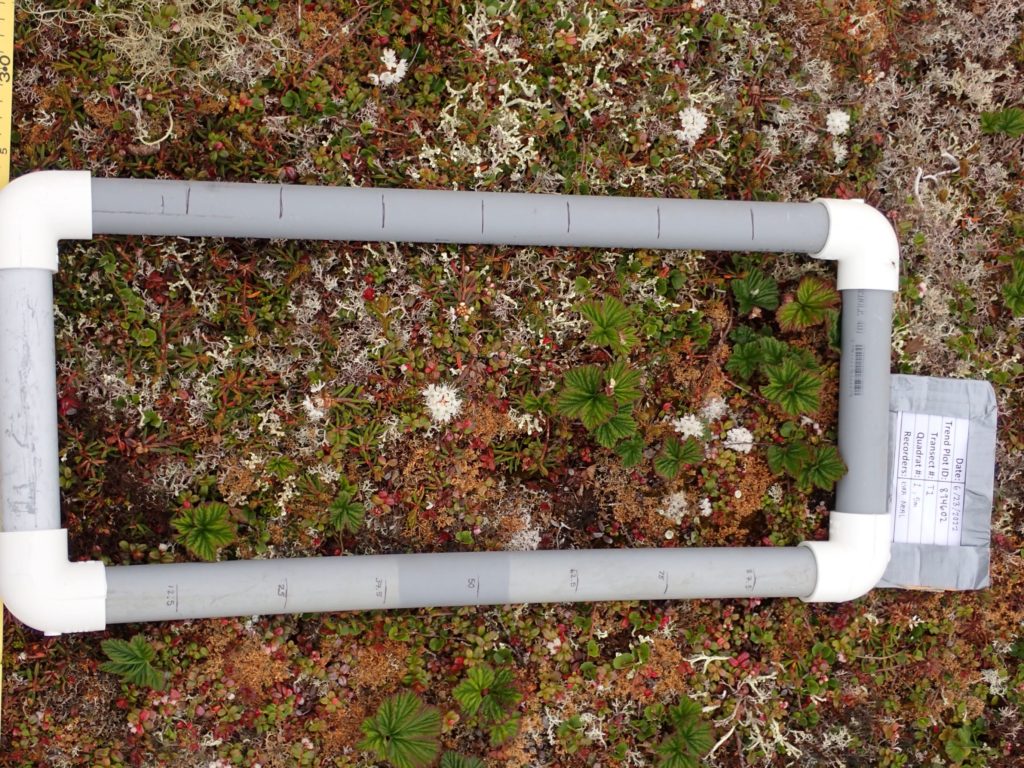
One of our 20×50 cm quadrats used for sampling ground cover to assess the condition of the range.
What did we uncover? Well, good news and bad news. The good news is there are no invasive species on the Yukon Delta Refuge. The bad news is we did find some fall dandelion on the road leading to the airport and up to the sewage lagoon in Mekoryuk. We removed as much of the fall dandelions as could be done by hand and notified the village council president of our finding. Our range evaluation showed that the western side of Nunivak was heavily grazed, but the rest of the island has high quality grazing range for reindeer to enjoy!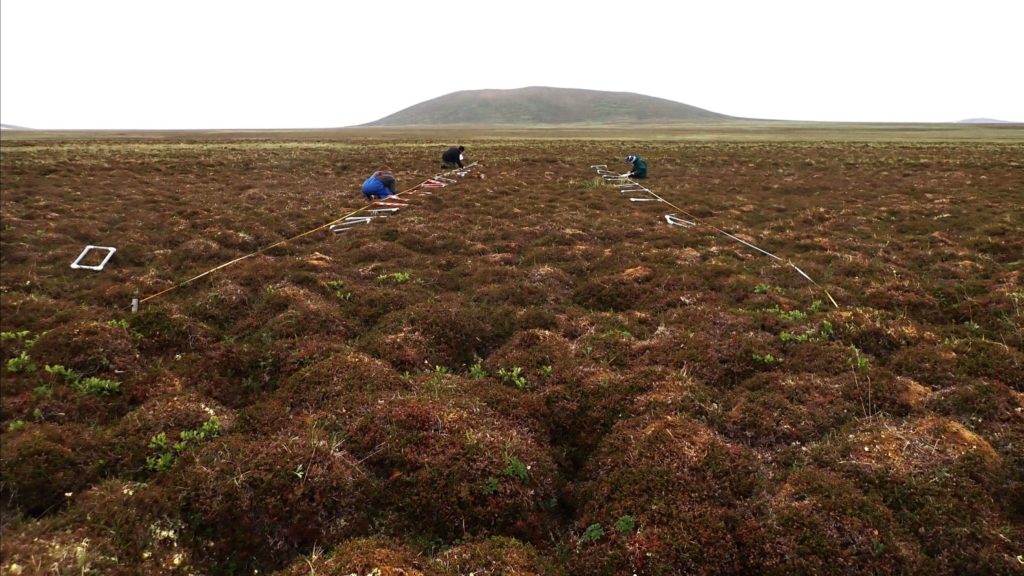
Plot transects laid out by Karin Sonnen and Katie Schmidt (L) while Blaine Spellman collects data (R) on an established transect. All three work for the Natural Resources Conservation Service.
